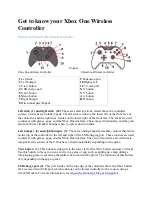
Communications
Copyright © 2007-2018 Eaton Corporation. All Rights Reserved.
IPN 997-00012-03 B2 Issue B2 July 2018
109
Trap Repeat
Trap Repeat Rate
Enable trap repeat if the network is not reliable
enough to ensure that traps get through the first time.
Enable Heartbeat Trap
Heartbeat Trap Period
The heatbeat trap (if enabled) is sent periodically to
tell the NMS that the SC300 is still “alive” and
communicating.
For each SNMP trap receiver (up to 8) , configure the following parameters:
Parameter
Configuration Guidelines
Name
Type the name of the SNMP trap receiver (20 bytes maximum).
This allows 20 ASCII characters, but less for languages with multi-byte
characters.
Level
SNMP Trap Level – controls reporting of specific events for each receiver:
•
Select
All Alarms And Warnings
to receive Critical, Major and Minor
alarms, and Warnings. (Typically Warnings are status messages such
as Equalize Active.)
•
Select
Minor And Above
to receive Critical, Major and Minor alarms.
•
Select
Major And Above
to receive only Critical and Major alarms.
•
Select
Critical Only
to receive only Critical alarms.
•
Select
Disabled
to disable notifications to the receiver.
To prevent an SNMP Trap for an individual alarm, set Send Trap to False
in the alarm's configuration.
IP Address
IP address of the trap receiver assigned by the network administrator.
Port
The default setting is 162. Do not change this setting, unless requested by
the network administrator.
Trap
Community
A form of password used with SNMP V1 and V2c. Use
public
, unless the
network administrator has assigned a new password.
Mode
Select:
•
Normal Traps
for sending traps to any network management system,
except
PowerManagerII
•
Acknowledged Summary Trap
for sending traps to
PowerManagerII
only
To change SNMP trap sending options by trap source
To make the SC300 send a trap only on an alarm activation or deactivation, or to stop the SC300
sending any traps when a particular alarm occurs:
1
Go to the
Send Trap
setting for that particular alarm.
Send trap
settings are present in the Alarm
States Table, Analog Input Alarms tables, and Digital input alarms table.
2
Change the setting from
Both
to :
•
None
for no traps sent of that alarm
•
Activation
, for traps sent only when the alarm becomes active.
•
Deactivation
, for traps sent only when the alarm becomes inactive.
















































